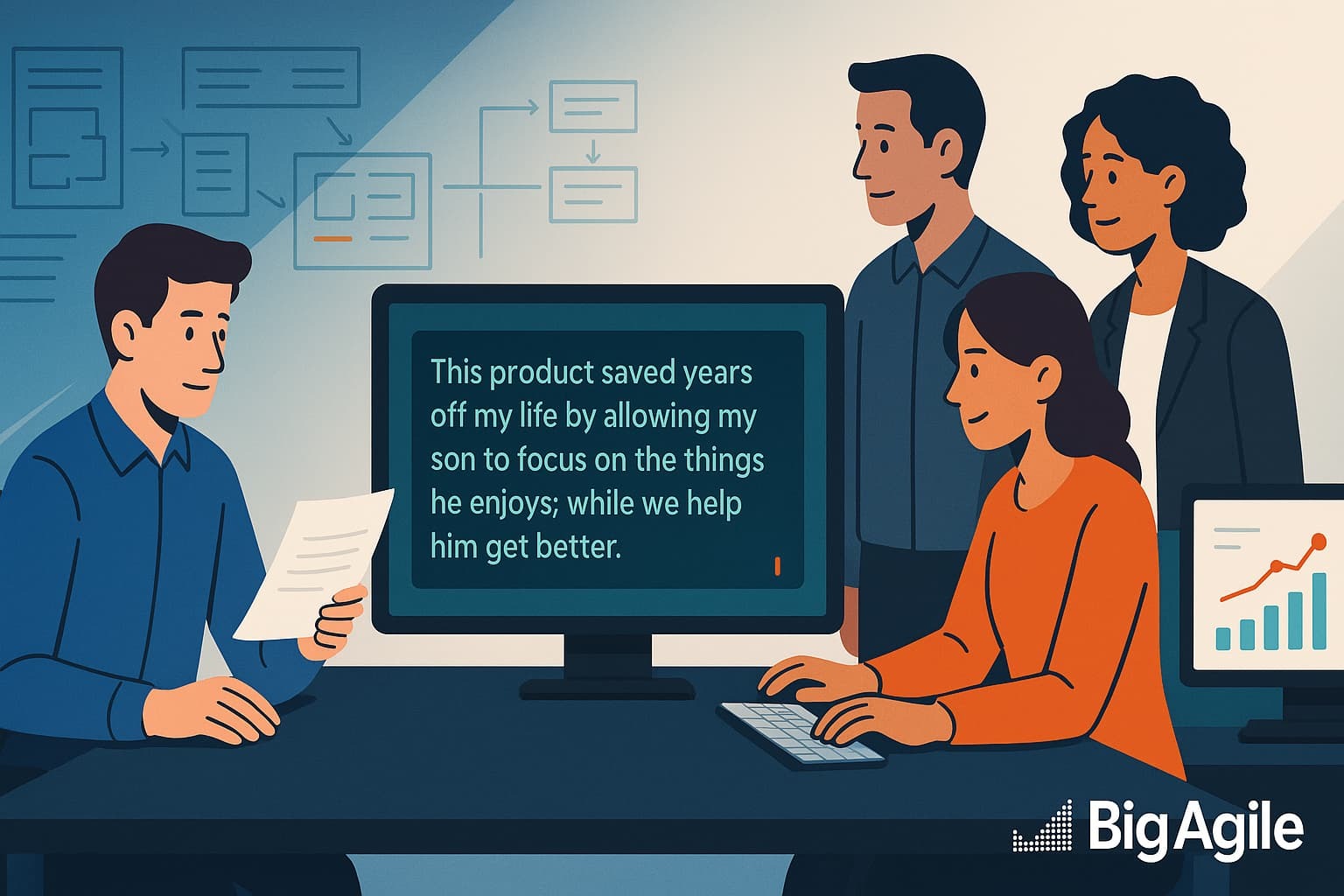
When it seems every product team on the planet is experimenting with generative AI, technical prowess feels like table stakes. What separates the engineers who merely “get the model to run” from those who deliver business-moving results is adaptability and its quieter companion, empathy.
Leadership researchers call adaptability the master competency needed for sustained success in today’s turbulent economy. Teams that don’t flex around fast-shifting user needs won’t survive because “average will die.” (Team Genius)
Change is often a complex and challenging process. A good change leadership model makes it something we can all understand and enjoy. We’ve heard repeatedly in our practice that people dislike change. I disagree to some extent; people do not like change THEY did not initiate.
A 3-Step Micro-Experiment You Can Run Today.
Capture an exact customer quote.
- Pick a verbatim sentence from a recent interview, ticket, or support chat.
- Pro-tip: Resist paraphrasing. Raw words carry emotional weight that sparks creativity.
Feed it into your next AI prompt.
You are a product copywriter. Rewrite our onboarding email
using the customer quote in Scratchpad.
<Scratchpad>
“This product saved years off my life by allowing my
son to focus on the things he enjoys,
while we help him get better”
</Scratchpad>
Highlight how we make your health plan painless from the get-go.
Adding lived language shifts the model from generic marketing fluff to resonant storytelling; told by your real customers.
Measure whether story clarity improves
- Run an A/B test (old vs. customer-quote prompt)
- Collect a quick FEEDBACK/CONFUSION score from five target users
- Track uplift in key metrics (click-through, time-on-page, NPS verbatims)
Why This Works
- Empathy unlocks relevance. When the model “hears” authentic pain points, it mirrors customers’ mental models.
- Adaptability is practiced, not preached. Iterating prompts around real feedback trains teams to flex quickly, an everyday rehearsal for larger strategic pivots.
- Small batches reduce risk. Treat every prompt tweak like a mini-sprint: short cycle time, immediate learnings, minimal cost.
Try It with Your Team (15-Minute Sprint Retro Add-On)
- Read one fresh customer quote aloud.
- Ask: “How might this change our next prompt/story/feature slice?”
- Commit to one experiment before the next retro.
- Log clarity metrics alongside velocity, because narrative quality is a deliverable.
Level-Up with Us
Our AI Prompting & Product Ownership accelerator dives deeper into:
- Craft high-fidelity prompts using our CRAFT framework and chain-of-thought templates (scratchpad, Plan→Execute→Verify) to ensure that your first AI draft of an INVEST user story is DoR-ready, cutting rewrite cycles by up to 50%.
- Ground outputs in your own data with the RAG workflow: upload sprint notes, specs, or customer interviews, then prompt the model to “cite only from retrieved excerpts,” ensuring that responses are factual and on-brand.
- Vet every result quickly with the 5-Q Checklist (Relevance, Factuality, Bias, Voice Fit, Actionability) to catch hallucinations or tone drift before they reach your backlog or stakeholder decks.
- Boost reliability on critical prompts through self-consistency and scratchpad prompting, running multiple generations and exposing the AI’s reasoning so you can choose the most robust answers.
- Accelerate backlog refinement in our Backlog Blitz by applying integrated AI estimators and sprint-summary tools in real time; transforming planning meetings from manual grind into high-velocity collaboration.
Adaptability is a muscle. Empathy is the workout. Today is a perfect day to start flexing.
Join the next cohort to turn adaptability into your unfair advantage, no matter how fast the tech stack shifts.